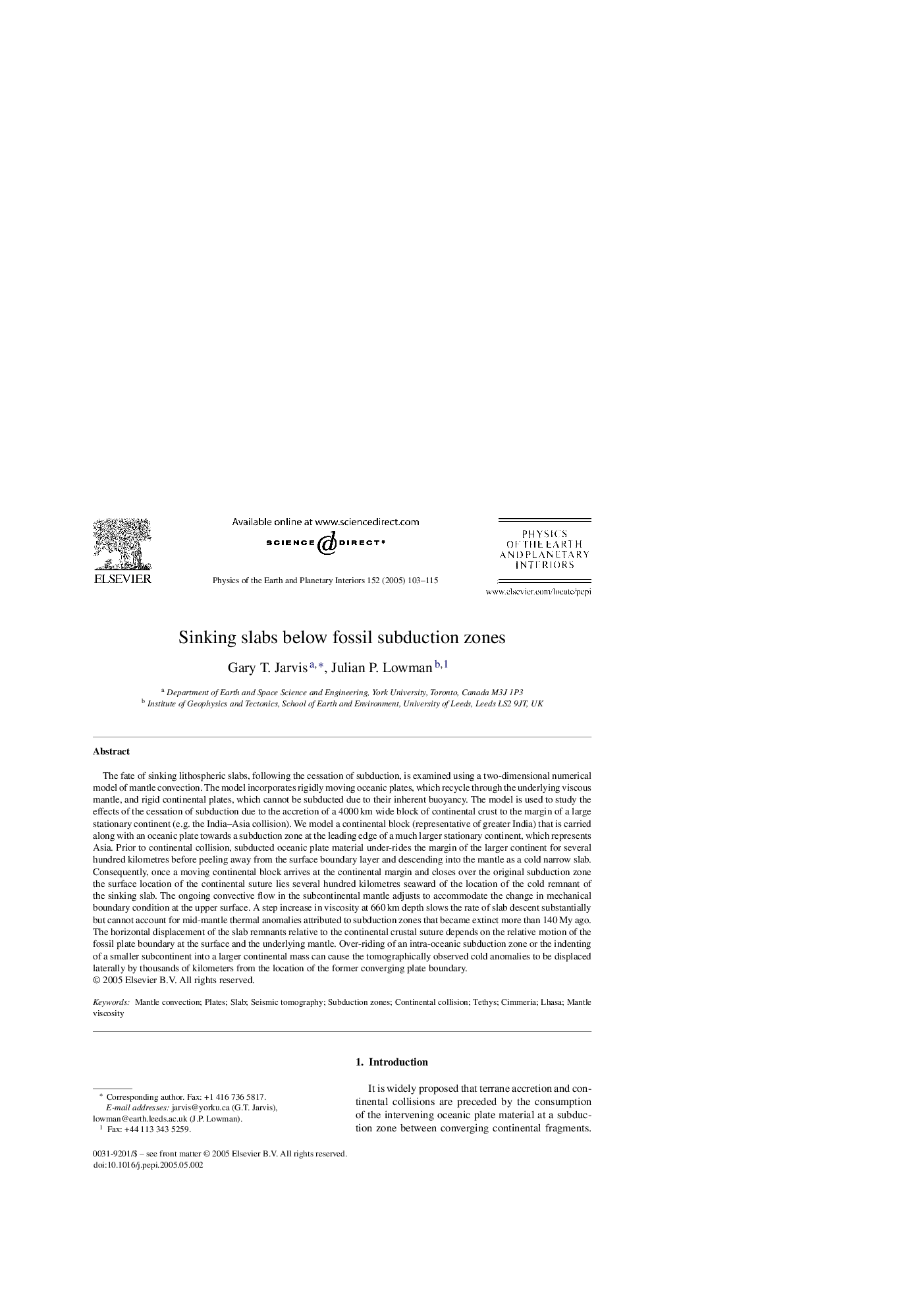| کد مقاله | کد نشریه | سال انتشار | مقاله انگلیسی | نسخه تمام متن |
|---|---|---|---|---|
| 10121288 | 1641614 | 2005 | 13 صفحه PDF | دانلود رایگان |
عنوان انگلیسی مقاله ISI
Sinking slabs below fossil subduction zones
دانلود مقاله + سفارش ترجمه
دانلود مقاله ISI انگلیسی
رایگان برای ایرانیان
کلمات کلیدی
موضوعات مرتبط
مهندسی و علوم پایه
علوم زمین و سیارات
فیزیک زمین (ژئو فیزیک)
پیش نمایش صفحه اول مقاله

چکیده انگلیسی
The fate of sinking lithospheric slabs, following the cessation of subduction, is examined using a two-dimensional numerical model of mantle convection. The model incorporates rigidly moving oceanic plates, which recycle through the underlying viscous mantle, and rigid continental plates, which cannot be subducted due to their inherent buoyancy. The model is used to study the effects of the cessation of subduction due to the accretion of a 4000Â km wide block of continental crust to the margin of a large stationary continent (e.g. the India-Asia collision). We model a continental block (representative of greater India) that is carried along with an oceanic plate towards a subduction zone at the leading edge of a much larger stationary continent, which represents Asia. Prior to continental collision, subducted oceanic plate material under-rides the margin of the larger continent for several hundred kilometres before peeling away from the surface boundary layer and descending into the mantle as a cold narrow slab. Consequently, once a moving continental block arrives at the continental margin and closes over the original subduction zone the surface location of the continental suture lies several hundred kilometres seaward of the location of the cold remnant of the sinking slab. The ongoing convective flow in the subcontinental mantle adjusts to accommodate the change in mechanical boundary condition at the upper surface. A step increase in viscosity at 660Â km depth slows the rate of slab descent substantially but cannot account for mid-mantle thermal anomalies attributed to subduction zones that became extinct more than 140Â My ago. The horizontal displacement of the slab remnants relative to the continental crustal suture depends on the relative motion of the fossil plate boundary at the surface and the underlying mantle. Over-riding of an intra-oceanic subduction zone or the indenting of a smaller subcontinent into a larger continental mass can cause the tomographically observed cold anomalies to be displaced laterally by thousands of kilometers from the location of the former converging plate boundary.
ناشر
Database: Elsevier - ScienceDirect (ساینس دایرکت)
Journal: Physics of the Earth and Planetary Interiors - Volume 152, Issues 1â2, 15 September 2005, Pages 103-115
Journal: Physics of the Earth and Planetary Interiors - Volume 152, Issues 1â2, 15 September 2005, Pages 103-115
نویسندگان
Gary T. Jarvis, Julian P. Lowman,